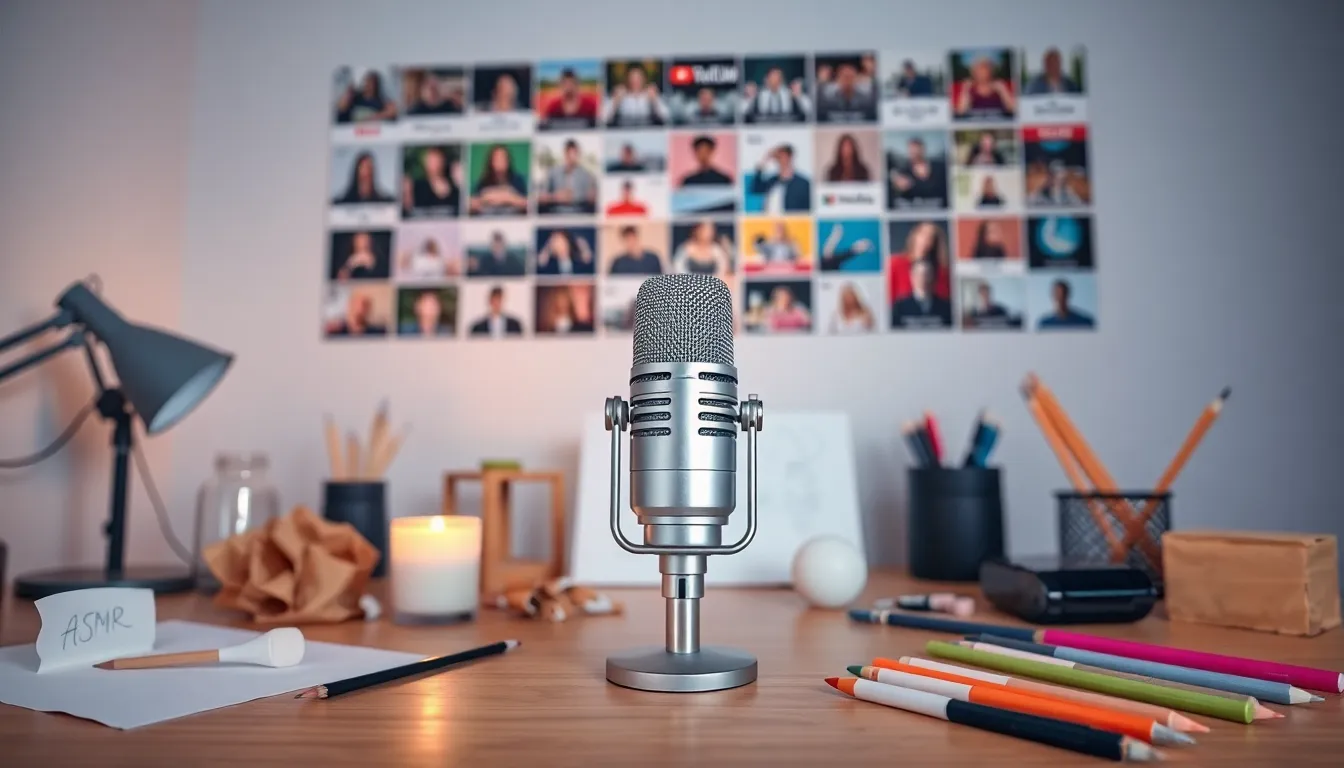Ever wondered what ASMR is? It’s not just a trend, it’s a whole world of sounds and sensations that has taken over social media platforms. From whispering voices to crinkling paper, ASMR captures the attention of millions and offers relaxation in the most unexpected ways. But before diving into the art of ASMR, let’s unravel what this three-letter acronym stands for and why it’s buzzing across the internet. Spoiler alert: it’s not a secret government agency, even if it feels like one sometimes.
Table of Contents
ToggleUnderstanding ASMR: Definition and Origins

ASMR stands for Autonomous Sensory Meridian Response. This fancy term refers to a tingling sensation that many experience when exposed to specific auditory or visual stimuli. It typically starts at the scalp and can travel down the back of the neck and spine. Sounds familiar, right? But where did it all begin? The concept of ASMR dates back to the early 2000s when a few enthusiasts started sharing videos aimed at provoking this response. Initially, it was relatively underground, but it quickly gained traction as people shared their experiences online.
The word ‘autonomous’ suggests that this sensation occurs naturally, without any external control, while ‘sensory’ indicates that it relates to the senses, and ‘meridian’ hints at a peak or climax of sensation. The response often manifests through relaxation, calmness, sleepiness, or even euphoria.
ASMR found its roots in forums and blogs, where individuals began discussing their experiences and what triggered these pleasant tingles. As social media platforms evolved, so did the means of sharing and creating ASMR content, creating a phenomenon that artists and users alike embraced.
The Science Behind ASMR
You might wonder, what’s happening in the brain during ASMR? Neuroscientific studies reveal some intriguing insights. When someone experiences ASMR, their brain releases feel-good chemicals such as dopamine and oxytocin.
Interestingly, a study conducted by the Journal of Sensory Studies identified variations in brain activity patterns among ASMR receivers compared to non-receivers. Increased activation in regions responsible for emotional processing and social connection demonstrated that ASMR creates not only a physical response but also a shared emotional experience.
But the experience isn’t the same for everyone. While some folks are triggered by gentle whispers, others might respond to tapping or textured sounds like crinkling plastic. It’s an individualistic realm, making ASMR a unique and captivating phenomenon.
How ASMR Became Popular on Social Media
The rise of ASMR on social media can be traced back to platforms like YouTube, where people started uploading videos designed to elicit these sensations. The community buzzed with excitement as more content creators joined the fray, showcasing diverse techniques and styles.
But, its popularity skyrocketed with the advent of ASMR channels featuring an array of genres, from roleplay scenarios to personal attention videos. Catchy titles and eye-catching thumbnails drew users in, while the content kept them coming back for more.
Also, social media influencers began incorporating ASMR into their platforms, exposing even wider audiences to its charms. TikTok and Instagram provided new stages for creators to experiment with shorter ASMR bites, making it more accessible than ever before. Memes, challenges, and trends intertwined with ASMR content, wrapping it into the ever-evolving tapestry of social media culture.
Now, not only is ASMR a trend, but it’s also an integral part of online culture. People turn to ASMR videos not only for personal enjoyment but as a means of coping with daily stressors and challenges.
Types of ASMR Content on Social Media
The beauty of ASMR lies in its variety. Different creators explore numerous types of content to appeal to diverse audiences. Here are some popular categories you might encounter:
Roleplay ASMR
Many creators engage in roleplay scenarios, offering personalized experiences to foster relaxation. Whether it’s a gentle hair-cutting session or a soothing doctor’s appointment, the immersive quality of roleplay ASMR creates a sense of intimacy that captivates viewers.
Whispering ASMR
Soft spoken or whispering voices are the bread and butter of ASMR. The tender delivery often promotes feelings of safety and calmness, triggering that elusive tingling sensation many seek.
Tapping and Scratching ASMR
Common objects such as wood, glass, or even nails can create delightful sounds. The rhythmic tapping or scratching provides a satisfying auditory experience that many regard as their go-to ASMR triggers.
Eating ASMR
Yes, you read that right. Some individuals enjoy watching others eat various foods. The sound of crunching or slurping can elicit ASMR in some viewers, creating an engaging experience that might seem unusual to others.
The Impact of ASMR on Social Media Users
How does ASMR shape the lives of those who embrace it? The impact is multifaceted. ASMR offers an escape from the chaotic world. Many users find solace in ASMR videos, reducing anxiety and promoting relaxation. It creates a comforting atmosphere, almost like having a friend nearby to talk quietly with after a long day.
Social media users often report improved sleep quality and decreased stress levels as they carry out ASMR into their self-care routines. The community surrounding ASMR fosters a sense of belonging and support, leading to improved mental well-being.
But, it’s essential to remember that while ASMR can be therapeutic, it might not be for everyone. Some individuals may experience discomfort or irritation from certain sounds, emphasizing the importance of understanding individual preferences in the ASMR realm.
Potential Benefits and Drawbacks of ASMR
Like any other trend, ASMR has its pros and cons. Let’s break it down:
Benefits
- Relaxation and Stress Relief: Many people use ASMR videos to unwind after a long day, allowing them to escape the stresses of everyday life.
- Sleep Aid: ASMR can help individuals fall asleep faster. Soft sounds and whispers create a serene environment conducive to sleep.
- Community Connection: The ASMR community offers support, shared experiences, and an understanding network that resonates with those who seek comfort in the practice.
Drawbacks
- Not Universally Effective: While ASMR is relaxing for many, it doesn’t work for everyone. Some people might find ASMR irritating or unenjoyable.
- Potential Over-Reliance: Individuals may become accustomed to ASMR as a sleep or relaxation tool, leading to over-reliance on external stimuli to produce calmness.
Understanding both perspectives is crucial for anyone looking to explore ASMR more deeply.




